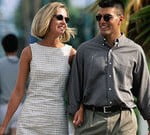
Crafting a workout is one thing; building an enjoyable fitness experience is another. But how much you like your routine is a big deal – after all, it’s the joy an activity brings that keeps you coming back for more. Simple solutions – such as choosing a form of exercise out of excitement and interest rather than obligation, or finding the right partner or group – can help.
[Read: Confession: I Hate Exercise.]
How you structure your workout will also influence how much you enjoy it. This same phenomenon holds true at the dinner table. With an assortment of foods in front of you, you decide (perhaps subconsciously) what to eat first, how much of one food to eat before switching and what to save until the very end. While it may seem trivial, these decisions affect how satisfying the meal seems. Likewise for workouts, in which the timing – morning, afternoon or evening – manipulates how we view the experience.
Do you reflect on these subtleties when crafting your workouts? Doing so can make a big difference. Here are some factors to consider in order to structure your routine the way that works best for you:
1. Consider whether you’re an early bird or a night owl.
Whether you rise with the sun or feel most alive once it’s gone down – something that’s largely genetically predetermined – how well you accomplish a task is linked to its timing. According to 2009 research from the American Academy of Sleep Medicine, a Major League Baseball pitcher’s natural sleep preference might affect how he performs in day and night games. For instance, in games that started before 7 p.m., pitchers who were morning types did better than pitchers who were evening types. However, in games that started at 7 p.m. or later, pitchers who were evening types performed slightly better than morning types. Similarly, night owls who exercise early are prone to less productive workouts. In other words, early birds ought to work out early, and night owls late.
[Read: These 10 People Wake Up at 5 a.m. (or Earlier) to Work Out.]
Try to align the timing of your workout to your preferences for sleep and wake times. If you don’t have preferences and are simply looking for the optimal time to train, know that vigorous exercise – though it will serve to relax you after experiencing stress – puts your nervous system in a state of arousal. In this state, we’re primed for completing mental tasks, but not falling asleep. If possible, complete your workout with at least several hours to spare before bedtime.
2. Assess your desire (or lack thereof) to delay gratification.
Assuming your workout program has a number of unique parts – sets of different individual exercises, for instance – how you order those parts matters. To maximize enjoyment, think of your relationship with gratification as it relates to other activities, like eating dinner. When do you choose to eat the good stuff on a plate containing a highly-cherished dish – say, lobster tail or filet mignon – along with a side or two? For me, I’ve always preferred to save the reward for the end. Even as a kid, I labored over uncracked crab legs, only choosing to eat the pay dirt once I’d extracted every morsel from the shell and finished the sides. My brother, in contrast, would eat chunks of crab as soon as they exited the shell, unable to delay gratification.
When it comes to workouts, some people prefer doing the difficult work first and saving the more enjoyable exercises for last, while others like to warm up slowly and save the challenges for the end. Understand what works for you, and structure your routine accordingly.
3. End on a high note – whatever that means to you.
More on timing: People tend to judge and remember an experience by its most intense point (the “best” or “worst” moment) and its end, according to work by Nobel Prize-winning psychologist Daniel Kahneman. This “peak-end rule” is what we use to summarize a movie we’ve watched, a conversation we’ve had or a tennis match we’ve played. If a movie’s last moment delightful, the conversation ended with a brilliant laugh or a tennis match concluded superbly, we’ll judge the event as highly favorable – even if the beginning and middle weren’t all that positive. In other words, we give more weight to the most recently experienced moments.
[Read: Go On, Laugh Your Heart Out. It’s Good for You.]
If the goal is to recall your workouts positively – which makes continuing exercise more likely – consider ending them on a bright note. This may mean a gentle stretch with deep breathing, one final grueling set or a post-workout coffee with an exercise buddy. How you define “bright note” is up to you, but finding it may be the key to maintaining the motivation to go back to the gym tomorrow.
[SOURCE :-usnews]



